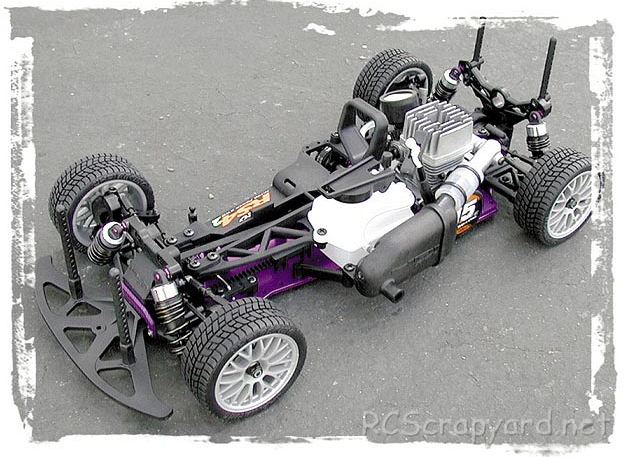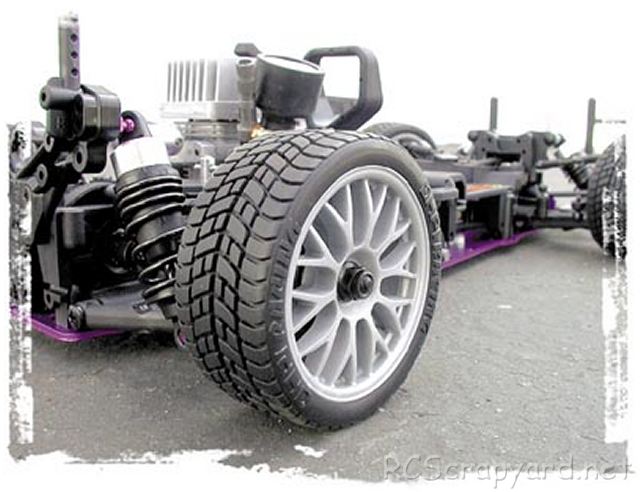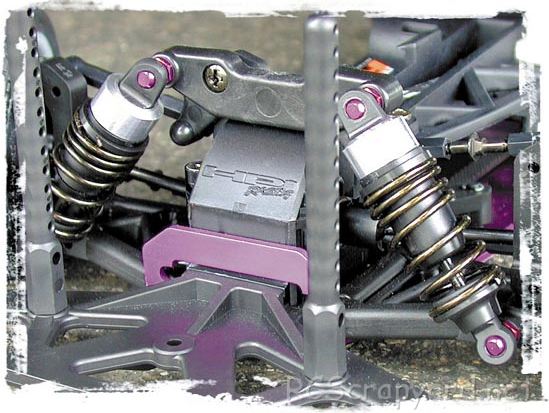

|
|
|


|
|
1/10 Scale Nitro Rally/Touring Car:
HPI Nitro RS4 2 - Porsche 911 GT3 - # 411 (Radio Controlled Model Review)History and Info:
Introduced by HPI (Hobby Products International) in 1999, the Porsche 911 GT3 - # 411 - based on the Nitro RS4 2 Touring Car Chassis, came as an unassembled kit, with a clear lexan polycarbonate bodyshell and .15FE Nitro Star engine. A number of other bodyshell options were available (Check out our HPI Archive).
▼ Scroll Down for More Images ▼
|








|
|
|

★ HPI Nitro RS4 2 Chassis ★

★ HPI Nitro RS4 2 Chassis ★

★ HPI Nitro RS4 2 Chassis ★

|
Buying a Used HPI Nitro RS4 2
|
|
Manufacturers and Brands Catalogued and Listed by RC-Scrapyard.
At present, the RC Model Manufacturers, Brands and Distributors covered by us are: ABC Hobby, Academy, Acme Racing, Agama Racing, Amewi, Ansmann Racing, ARRMA, Team Associated, Atomic RC, Axial, AYK, Bolink, BSD Racing, Capricorn, Carisma, Carson, Caster Racing, Cen, Corally, Custom Works, Durango, Duratrax, ECX - Electrix, Exceed RC, FG Modellsport, FS-Racing, FTX, Fujimi, Gmade, GS-Racing, Harm, HBX, Helion, Heng Long, Himoto Racing, Hirobo, Hitari, Hobao, Hong-Nor, Hot Bodies, HPI, HSP, Intech, Integy, Jamara, JQ Products, Kawada, Kyosho, Losi, LRP, Maisto, Mardave, Marui, Maverick, MCD Racing, Megatech, Mugen, New Bright, Nichimo, Nikko, Nkok, Ofna, Pro-Pulse, Protech, PTI, RC4WD, Redcat Racing, RJ-Speed, Robitronic, Schumacher, Seben, Serpent, Smartech, Sportwerks, Step-Up, Tamiya, Team-C Racing, Team Magic, Thunder Tiger, Tomy, Top Racing, Traxxas, Trinity, Tyco, Vaterra RC, Venom, VRX Racing, WLToys, X-Factory, Xmods, Xpress, Xray, XTM, Yankee RC, Yokomo, ZD Racing and Zipzaps. |
|
Hints, Tips and Information Gear Differentials
The Gear Differentials, commonly used in Buggys, Trucks, Touring Cars, Monster Trucks and some of the early Tamiya Formula One and Le-Mans cars, are by design more robust than the high maintenance Ball Differentials.
|
|
Hints, Tips and Information
The Importance of Suspension Droop
When you pick up your RC model car, the suspension arms naturally drop, this is termed as Droop and should be equal from side to side, but can vary from front to rear. |
|
RC Models:
|
Radio & Motors: |
Other
Accessories: |